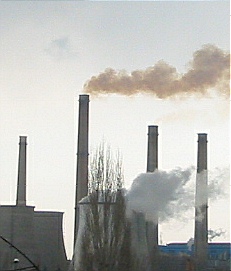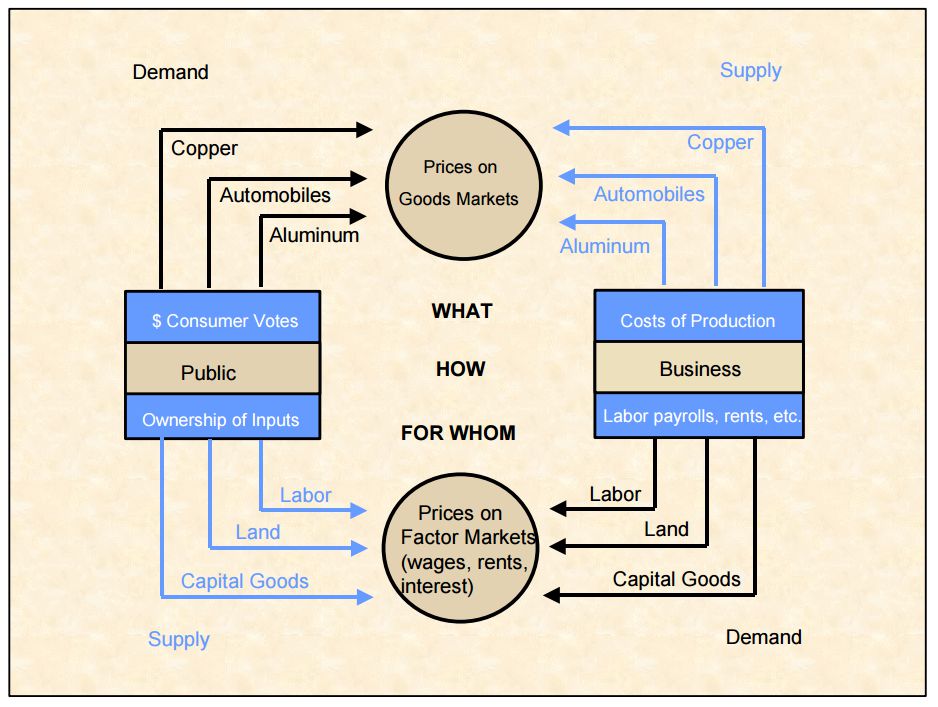|
Embedding Effect
The embedding effect is an issue in environmental economics and other branches of economics where researchers wish to identify the value of a specific public good using a contingent valuation or willingness-to-pay (WTP) approach. The problem arises because public goods belong to society as a whole, and are generally not traded in the market. Because market prices cannot be used to value them, researchers ask a sample of people how much they are willing to pay for the public good, wildlife preservation for example. The results can be misleading because of the difficulty, for individual society members, of identifying the ''particular'' value that they attach to one ''particular'' thing which is embedded in a collection of similar things (e.g. The Tower of London within the set of all globally important historic monuments or Caernarvon Castle within the set of all Welsh Scheduled Monuments). A similar problem occurs with a wider selection of public goods (for example whether spending ... [...More Info...] [...Related Items...] OR: [Wikipedia] [Google] [Baidu] |
Environmental Economics
Environmental economics is a sub-field of economics concerned with environmental issues. It has become a widely studied subject due to growing environmental concerns in the twenty-first century. Environmental economics "undertakes theoretical or empirical studies of the economic effects of national or local environmental policies around the world. ... Particular issues include the costs and benefits of alternative environmental policies to deal with air pollution, water quality, toxic substances, solid waste, and global warming." Environmental economics is distinguished from ecological economics in that ecological economics emphasizes the economy as a subsystem of the ecosystem with its focus upon preserving natural capital. One survey of German economists found that ecological and environmental economics are different schools of economic thought, with ecological economists emphasizing "strong" sustainability and rejecting the proposition that human-made ("physical") capital ... [...More Info...] [...Related Items...] OR: [Wikipedia] [Google] [Baidu] |
Economics
Economics () is the social science that studies the Production (economics), production, distribution (economics), distribution, and Consumption (economics), consumption of goods and services. Economics focuses on the behaviour and interactions of Agent (economics), economic agents and how economy, economies work. Microeconomics analyzes what's viewed as basic elements in the economy, including individual agents and market (economics), markets, their interactions, and the outcomes of interactions. Individual agents may include, for example, households, firms, buyers, and sellers. Macroeconomics analyzes the economy as a system where production, consumption, saving, and investment interact, and factors affecting it: employment of the resources of labour, capital, and land, currency inflation, economic growth, and public policies that have impact on glossary of economics, these elements. Other broad distinctions within economics include those between positive economics, desc ... [...More Info...] [...Related Items...] OR: [Wikipedia] [Google] [Baidu] |
Public Good (economics)
In economics, a public good (also referred to as a social good or collective good)Oakland, W. H. (1987). Theory of public goods. In Handbook of public economics (Vol. 2, pp. 485-535). Elsevier. is a good that is both non-excludable and non-rivalrous. For such goods, users cannot be barred from accessing or using them for failing to pay for them. Also, use by one person neither prevents access of other people nor does it reduce availability to others. Therefore, the good can be used simultaneously by more than one person. This is in contrast to a common good, such as wild fish stocks in the ocean, which is non-excludable but rivalrous to a certain degree. If too many fish were harvested, the stocks would deplete, limiting the access of fish for others. A public good must be valuable to more than one user, otherwise, the fact that it can be used simultaneously by more than one person would be economically irrelevant. Capital goods may be used to produce public goods or services th ... [...More Info...] [...Related Items...] OR: [Wikipedia] [Google] [Baidu] |
Contingent Valuation
Contingent valuation is a survey-based economic technique for the valuation of non- market resources, such as environmental preservation or the impact of externalities like pollution. While these resources do give people utility, certain aspects of them do not have a market price as they are not directly sold – for example, people receive benefit from a beautiful view of a mountain, but it would be tough to value using price-based models. Contingent valuation surveys are one technique which is used to measure these aspects. Contingent valuation is often referred to as a ''stated preference'' model, in contrast to a price-based ''revealed preference'' model. Both models are utility-based. Typically the survey asks how much money people would be willing to pay (or willing to accept) to maintain the existence of (or be compensated for the loss of) an environmental feature, such as biodiversity. History Contingent valuation surveys were first proposed in theory by S.V. Ciriacy ... [...More Info...] [...Related Items...] OR: [Wikipedia] [Google] [Baidu] |
Willingness-to-pay
In behavioral economics, willingness to pay (WTP) is the maximum price at or below which a consumer will definitely buy one unit of a product.Varian, Hal R. (1992), Microeconomic Analysis, Vol. 3. New York: W.W. Norton. This corresponds to the standard economic view of a consumer reservation price. Some researchers, however, conceptualize WTP as a range. According to the constructive preference view, consumer willingness to pay is a context-sensitive construct; that is, a consumer's WTP for a product depends on the concrete decision context. For example, consumers tend to be willing to pay more for a soft drink in a luxury hotel resort in comparison to a beach bar or a local retail store. See also * Cost-benefit analysis * Welfare economics Welfare economics is a branch of economics that uses microeconomic techniques to evaluate well-being (welfare) at the aggregate (economy-wide) level. Attempting to apply the principles of welfare economics gives rise to the field of p ... [...More Info...] [...Related Items...] OR: [Wikipedia] [Google] [Baidu] |
Market Prices
A price is the (usually not negative) quantity of payment or compensation given by one party to another in return for goods or services. In some situations, the price of production has a different name. If the product is a "good" in the commercial exchange, the payment for this product will likely be called its "price". However, if the product is "service", there will be other possible names for this product's name. For example, the graph on the bottom will show some situations A good's price is influenced by production costs, supply of the desired item, and demand for the product. A price may be determined by a monopolist or may be imposed on the firm by market conditions. Price can be quoted to currency, quantities of goods or vouchers. * In modern economies, prices are generally expressed in units of some form of currency. (More specifically, for raw materials they are expressed as currency per unit weight, e.g. euros per kilogram or Rands per KG.) * Although prices ... [...More Info...] [...Related Items...] OR: [Wikipedia] [Google] [Baidu] |
Government Policy
Public policy is an institutionalized proposal or a decided set of elements like laws, regulations, guidelines, and actions to solve or address relevant and real-world problems, guided by a conception and often implemented by programs. Public policy can be considered to be the sum of government direct and indirect activities and has been conceptualized in a variety of ways. They are created and/or enacted on behalf of the public typically by a government. Sometimes they are made by nonprofit organisations or are made in co-production with communities or citizens, which can include potential experts, scientists, engineers and stakeholders or scientific data, or sometimes use some of their results. They are typically made by policy-makers affiliated with (in democratic polities) currently elected politicians. Therefore, the "policy process is a complex political process in which there are many actors: elected politicians, political party leaders, pressure groups, civil servants, ... [...More Info...] [...Related Items...] OR: [Wikipedia] [Google] [Baidu] |
Clean Water Act
The Clean Water Act (CWA) is the primary federal law in the United States governing water pollution. Its objective is to restore and maintain the chemical, physical, and biological integrity of the nation's waters; recognizing the responsibilities of the states in addressing pollution and providing assistance to states to do so, including funding for publicly owned treatment works for the improvement of wastewater treatment; and maintaining the integrity of wetlands.Jim Hanlon, Mike Cook, Mike Quigley, Bob Wayland“Water Quality: A Half Century of Progress.”EPA Alumni Association. March 2016. The Clean Water Act was one of the United States' first and most influential modern environmental laws. Its laws and regulations are primarily administered by the U.S. Environmental Protection Agency (EPA) in coordination with state governments, though some of its provisions, such as those involving filling or dredging, are administered by the United States Army Corps of Engineers, U.S. A ... [...More Info...] [...Related Items...] OR: [Wikipedia] [Google] [Baidu] |
Wetlands Protection Program
A wetland is a distinct ecosystem that is flooded or saturated by water, either permanently (for years or decades) or seasonally (for weeks or months). Flooding results in oxygen-free (anoxic) processes prevailing, especially in the soils. The primary factor that distinguishes wetlands from terrestrial land forms or Body of water, water bodies is the characteristic vegetation of aquatic plants, adapted to the unique anoxic hydric soils. Wetlands are considered among the most biologically diverse of all ecosystems, serving as home to a wide range of plant and animal species. Methods for assessing wetland functions, wetland ecological health, and general wetland condition have been developed for many regions of the world. These methods have contributed to wetland conservation partly by raising public awareness of the functions some wetlands provide. Wetlands occur naturally on every continent. The water in wetlands is either freshwater, brackish or saltwater. The main wetland type ... [...More Info...] [...Related Items...] OR: [Wikipedia] [Google] [Baidu] |
Fisheries Management Plan
Fishery can mean either the enterprise of raising or harvesting fish and other aquatic life; or more commonly, the site where such enterprise takes place ( a.k.a. fishing ground). Commercial fisheries include wild fisheries and fish farms, both in freshwater waterbodies (about 10% of all catch) and the oceans (about 90%). About 500 million people worldwide are economically dependent on fisheries. 171 million tonnes of fish were produced in 2016, but overfishing is an increasing problem — causing declines in some populations. Because of their economic and social importance, fisheries are governed by complex fisheries management practices and legal regimes that vary widely across countries. Historically, fisheries were treated with a " first-come, first-served " approach, but recent threats by human overfishing and environmental issues have required increased regulation of fisheries to prevent conflict and increase profitable economic activity on the fishery. Modern jurisdict ... [...More Info...] [...Related Items...] OR: [Wikipedia] [Google] [Baidu] |
Coastal Water Quality
The coast, also known as the coastline or seashore, is defined as the area where land meets the ocean, or as a line that forms the boundary between the land and the coastline. The Earth has around of coastline. Coasts are important zones in natural ecosystems, often home to a wide range of biodiversity. On land, they harbor important ecosystems such as freshwater or estuarine wetlands, which are important for bird populations and other terrestrial animals. In wave-protected areas they harbor saltmarshes, mangroves or seagrasses, all of which can provide nursery habitat for finfish, shellfish, and other aquatic species. Rocky shores are usually found along exposed coasts and provide habitat for a wide range of sessile animals (e.g. mussels, starfish, barnacles) and various kinds of seaweeds. Along tropical coasts with clear, nutrient-poor water, coral reefs can often be found between depths of . According to a United Nations atlas, 44% of all people live within 5 km (3.3mi) ... [...More Info...] [...Related Items...] OR: [Wikipedia] [Google] [Baidu] |







